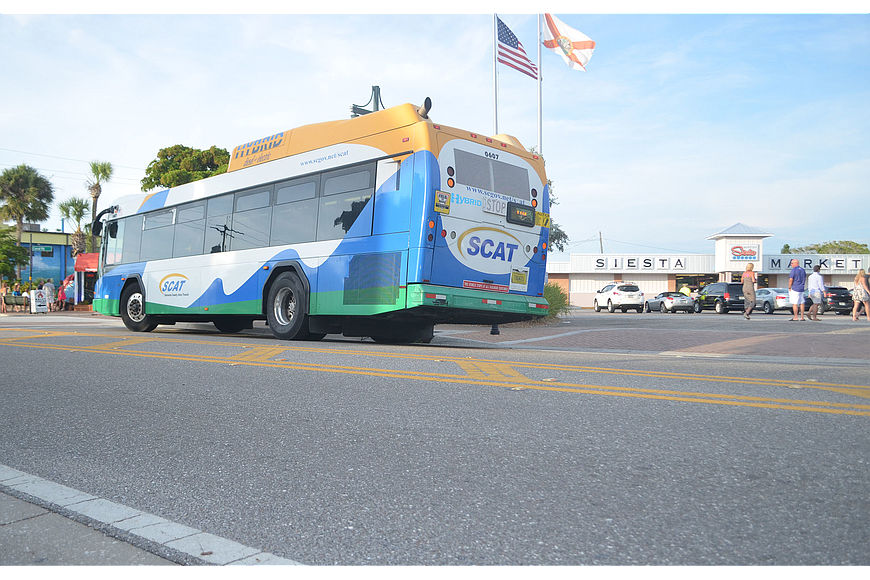- December 5, 2025
-
-
Loading

Loading

After years of lobbying from businesses, Siesta Key will finally get its trolley service this month — though it’s unclear whether that service is here to stay.
On Tuesday, the County Commission approved a contract with St. Louis-based transit company Ride Right LLC to operate a free open-air trolley circulator for a six-month trial run. The service will cost $592,191, part of which is funded by a Florida Department of Transportation grant.
The trolley service, called the Siesta Key Breeze, will run from Turtle Beach to the Siesta Key Village. During peak hours, from 10 a.m. to 6 p.m., trolleys will run every 20 minutes. The trolleys will run every 30 minutes off-peak, from 8 a.m. to 10 a.m. and 6 p.m. to 11:59 p.m.
Before the Siesta Key Village Association merged with the Siesta Key Chamber of Commerce, the merchants group advocated strongly for the creation of open-air transit service on the island. Leaders such as Daiquiri Deck co-owner Russell Matthes saw enhanced public transportation as a way to address the growing traffic issues on Siesta.
“I don’t think it’s an option anymore,” Matthes said. “It’s a must-do thing.”
The trolley is replacing a failing Siesta Key transit service. Sarasota County Area Transit created Route 10, which served the Siesta Key beaches, in 2014. SCAT attempted to adjust the route to increase ridership, but the bus service continued to suffer from a lack of interest.
Both Siesta merchants and SCAT officials said ridership may have been down because the type of vehicle didn’t match the desires of riders in the area. The hope is that a switch to a trolley-inspired open-air vehicle will produce increased enthusiasm.
“That’s what we’ve heard — everybody wants an open-air trolley,” SCAT spokeswoman Kendra Keiderling said. “It’s the image, it’s the statement. It doesn’t have the stigma of the bus; it’s neat to get on. That’s why we’re trying this.”
Although merchants might be excited to see a trolley rolling through the Key, county officials are making clear that this is only a test for now. There’s reason to question whether a trolley service will be successful. Multiple private trolley ventures have popped up during the past decade only to fizzle out, though Matthes attributed that to a lack of county support.
“We just have to get the word out to the condominiums and business owners — to get the word out to the public so it’s used.” — Russell Matthes
The FDOT grant funding the trolley service expires in August. Keiderling said that grant is essential for SCAT to continue its agreement with Ride Right — and high ridership numbers will help the transit operator secure state funding. Without that outside funding source, barring any significant changes to the SCAT budget, the trolley service is unlikely to last beyond the summer.
“Essentially, I think the only way we’d be able to continue it is if we receive grant funding going forward,” Keiderling said. “It’s up to all of us to make it work.”
Businesses in the area want to spread the message that the trolley is available.
“We just have to get the word out to the condominiums and business owners — to get the word out to the public so it’s used,” Matthes said.
Still, there’s no set threshold the trolley service must hit to continue past the six-month trial period. Although higher ridership increases the odds of procuring another grant, Kenderling said even a successful trolley service may be at risk depending on what the state agency decides.
“It’s a crapshoot if you get the grant funding,” she said.